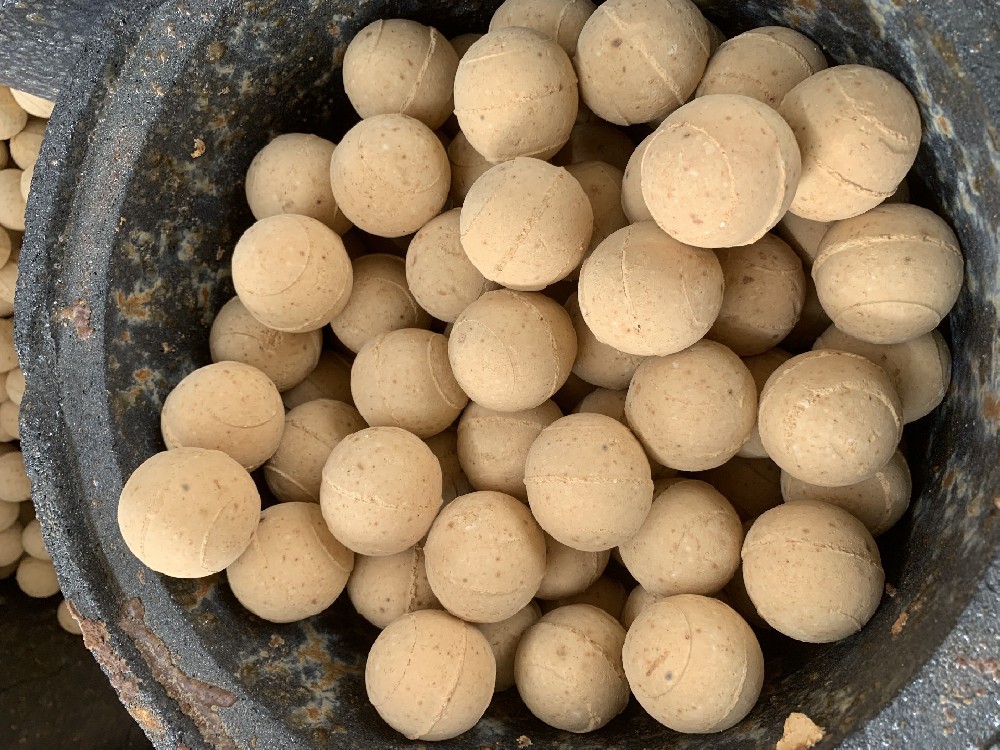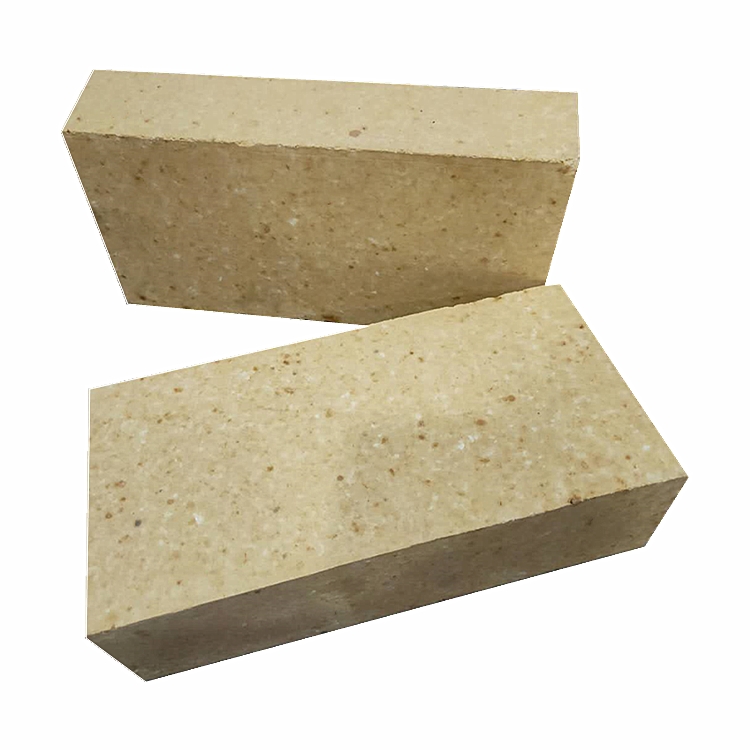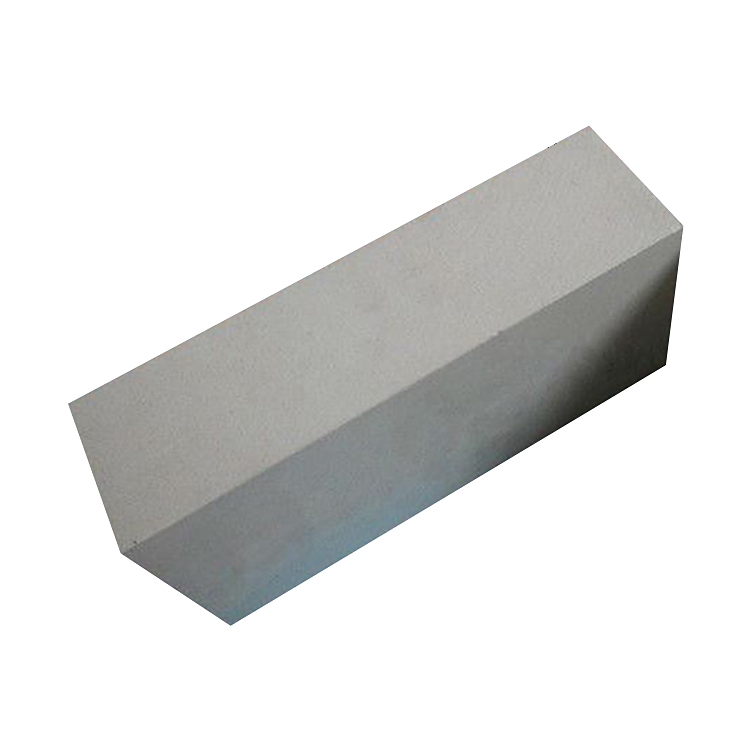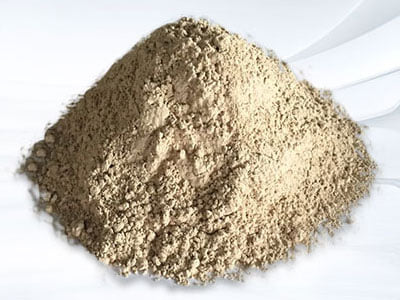Technology and performance of magnesia chrome brick used in ladle slag line
Directly bonded magnesia-chrome bricks are MgO-Cr2O3 refractory products made of high-purity magnesia and chrome concentrates with low impurity content after co-grinding and high temperature (above 1700 ℃) firing. High temperature strength and excellent thermal shock resistance; combined magnesia-chrome brick is a MgO-Cr2O3 refractory product made of fused magnesia-chrome sand as raw material, formed by high pressure and fired at high temperature of 1800 °C. Due to the higher direct bonding rate, low apparent porosity and high bulk density, the re-bonded magnesia-chrome brick has higher high temperature strength and slag corrosion resistance than the direct-bonded magnesia-chrome brick. However, the thermal shock resistance of combined magnesia-chrome bricks is poor. The main damage characteristics of the MgO-Cr2O3 refractory in the slag line of the refining steel tank are chemical erosion of slag, structural spalling caused by slag penetration and erosion of high-temperature molten steel slag. MgO-Cr2O3 refractory has certain corrosion resistance to CaO-SiO2 slag with low CaO/SiO2 ratio (less than 2), but for CaO-SiO2 slag with high CaO/SiO2 ratio at high temperature, especially When Fe2O3 is high, the eutectic temperature drops rapidly, and the corrosion resistance is very poor.
Improving the durability (thermal shock resistance, slag resistance and erosion resistance) of MgO-Cr2O3 bricks used in the slag line of the refining steel tank is related to the properties of the secondary spinel in the brick (the amount of generation, size and distribution) Most researchers at home and abroad have confirmed that the formation of secondary spinel in bricks is related to brick-making raw materials, admixtures and brick-making processes:
(1) The number of secondary spinels directly combined with magnesia-chrome bricks increases with the proportion of chrome ore (or Cr2O3 content) in the ingredients; The total amount of R2O3 (Cr2O3, Al2O3 and Fe2O3) in magnesia-chromium sand increased, the content of Fe2O3 in R2O3 decreased and the content of Al2O3 increased.
(2) When the specific surface area of the fine powder in the combination of magnesia-chromium brick ingredients reaches 5~6m2/g, the secondary spinel generation is the largest.
(3) When the firing temperature of the directly bonded magnesia-chromium brick is above 1700 °C, secondary spinels with self-crystallization characteristics can be observed; the size and number of secondary spinels increase with the further increase of the firing temperature , when the sintering temperature is increased to 1800 ℃, the secondary spinel generation amount reaches 6% (volume fraction).
Numerous studies have confirmed that:
(1) With the increase in the amount and size of the secondary spinel in the brick, for example, the volume fraction of the secondary spinel in the directly combined magnesia-chromium brick reaches 6% and the volume of the secondary spinel in the re-combined magnesia-chromium brick When the fraction reaches 8%, the high temperature flexural strength reaches the highest value. High temperature flexural strength is an important index to measure the high temperature wear resistance of MgO-Cr2O3 bricks, and high temperature wear resistance can reflect an important index of resistance to high temperature molten steel and slag erosion, so the direct combination of secondary spinel generation, The corrosion resistance of recombined (semi-recombined) magnesia-chrome bricks against high temperature molten steel and slag will inevitably improve:
(2) There are a large number of secondary spinels in the recombined magnesia-chrome bricks that prevent slag erosion, so the slag resistance is the highest:
(3) Improve the fineness of the fine powder in the ingredients (for example, when the specific surface area of the fine powder reaches 5m2/g), and the thermal shock resistance of the magnesia-chrome brick is significantly improved.
Some countries have used alumina instead of chromite to manufacture MgO-MgO·Al2O3 bricks with good thermal shock stability (Al2O330%~40%, MgO60%~70%). However, the slag resistance of bricks containing chrome spinel is stronger, because the solubility of chrome spinel in silicate melt is lower than that of aluminum spinel. Initially, Radex was tried at the slag line of ASEA-SKF150t steel tank where the temperature fluctuated sharply. -DB605 brick, the service life is only 8 times. In order to prolong the life of the ASEA-SKF steel tank slag line (especially the part closest to the electrode), fused cast magnesia-chrome bricks have been tried. The fused-cast magnesia-chrome brick represented by "corhart104" is made of 55% magnesia and 45% chromite mixed raw materials through the eutectic melt of electric arc furnace at 2500 ℃. After releasing thermal stress, it is finally cut and ground with diamond. processing. The phase composition of this fused cast magnesia-chrome brick: periclase and its solid solution 50%, spinel 39%, silicate no more than 10%; dense structure (total porosity <12.0%), compressive strength up to 140~165MPa, the temperature of 5% deformation under the load of 0.18MPa is as high as 2050℃, but the thermal shock stability is poor and the price is expensive, so it is replaced by high-quality recombined magnesia-chrome bricks.
Directly combined, recombined (semi-recombined) magnesia-chrome bricks occupy the longest time in the slag line of the refining steel tank, and it is still an important refractory material for the slag line of the refining steel tank today. However, the complex production of these magnesia-chrome bricks, the price problem and the harm to human health caused by hexavalent chromium force people to develop their substitutes.
-

Thermal storage alumina balls
The Thermal storage alumina ballsis made of industrial alumina and refractory kaolin as the main raw materials through scientific formula, forming and high-temperature calcination.Thermal storage alumina ballss are divid··· -

Anti-stripping high alumina brick
Use description of Anti-stripping high alumina brick1. Anti-stripping high alumina brick has a good application in low temperature parts such as large and medium-sized cement precalciner, kiln smoke chamber, indoor decom··· -

Anti-stripping high alumina bricks
Anti-stripping high alumina bricks are made of high alumina bauxite clinker, mullite, kyanite, zircon sand, and binder after granulating and powdering processes, mixed in a certain proportion, pressed into shape, and fir··· -

silica hot repair refractory
Performance index of silica hot repair refractoryThe material is a kind of plastic unshaped refractory material, its main component is SiO2, it is made of special clinker and various binders and additives, and it is proc···

